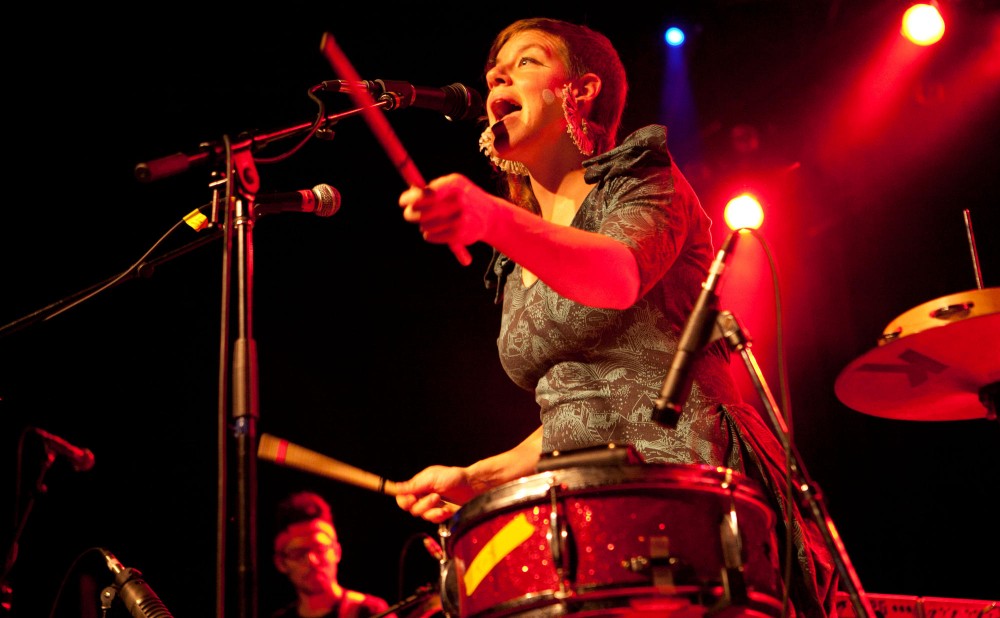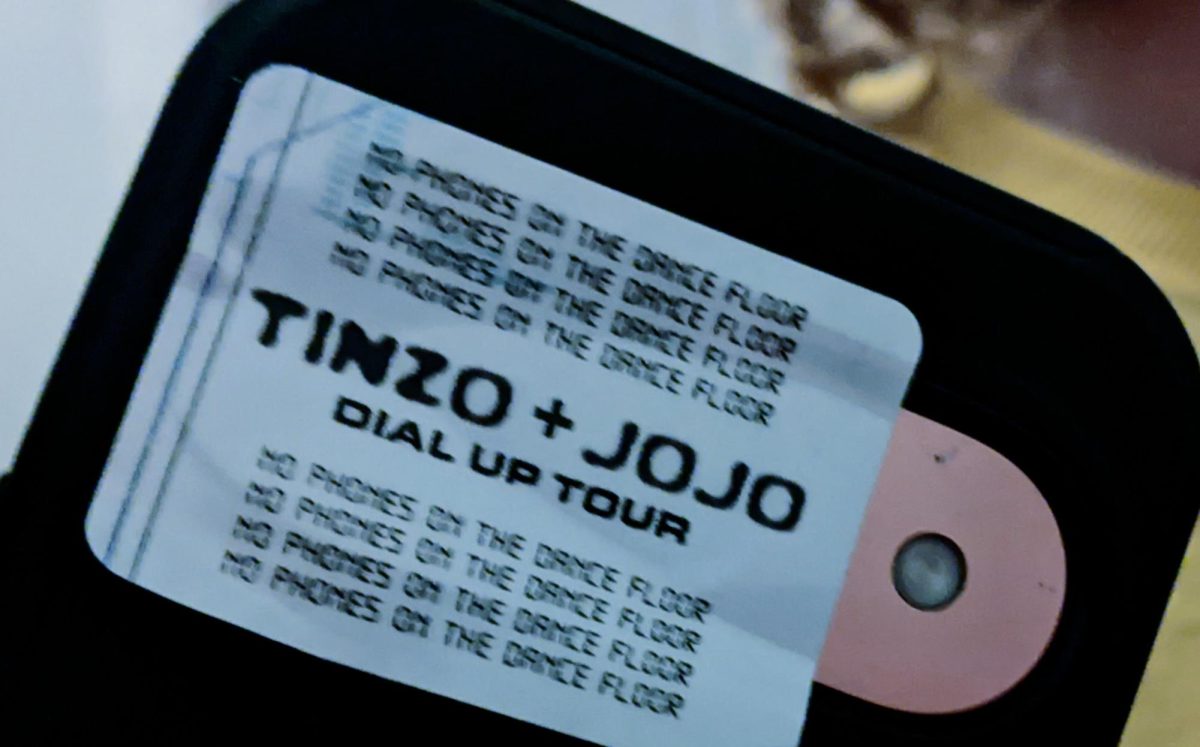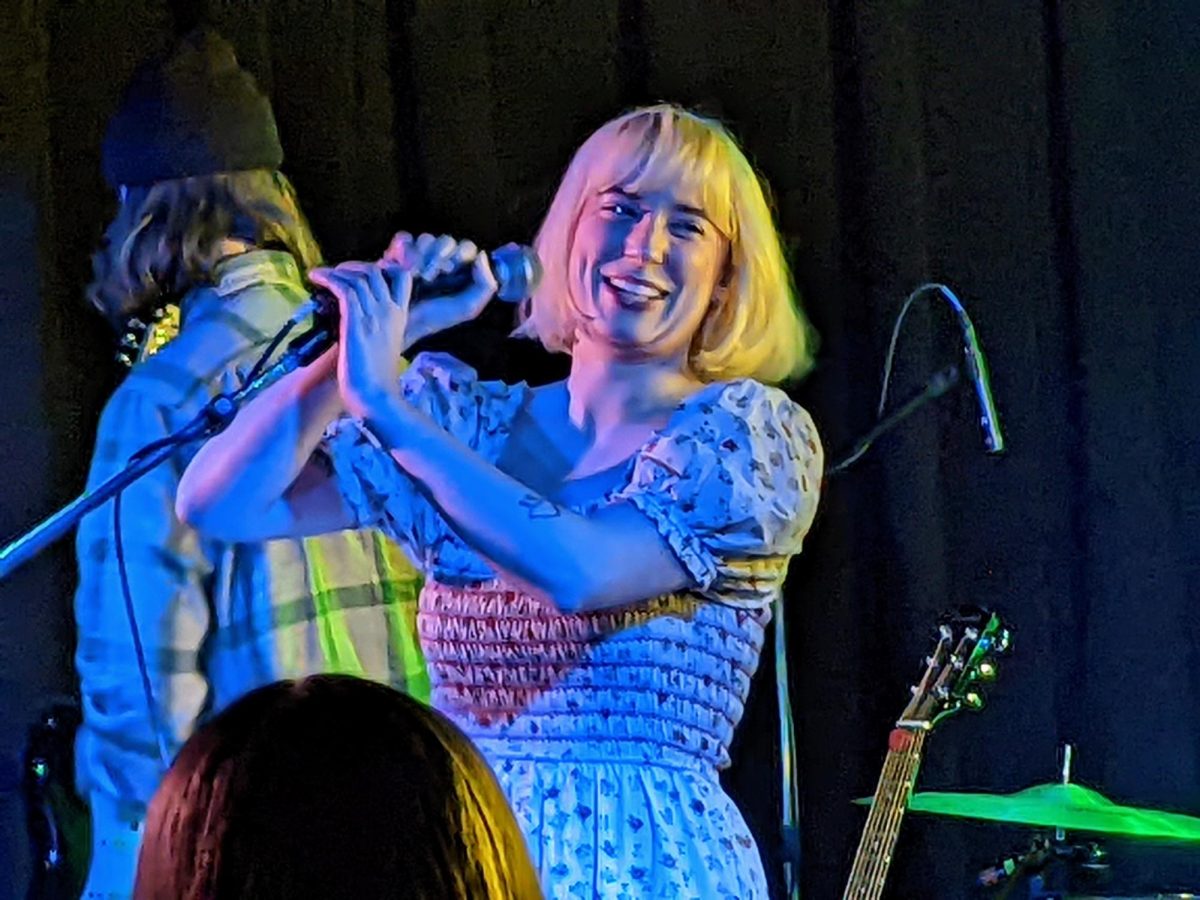Though the inter-state football rivalry âÄî brought in by the Wisconsin BadgersâÄô visit to town âÄî dominated the aura around the University of Minnesota on Saturday, the vibes at First Avenue soared to exuberant heights with tUnE-yArDsâÄô raucous performance. The lead singer and ukulele player, Merrill Garbus, might have a name like a financial advising firm, but sheâÄôs actually very un-business like. Complete with face paint and two drums on either side, Garbus launched into a high-powered call and response with the near sell-out crowd at First Avenue. The tUnE-yArDs leader began the concert alone on stage with her distinctive looping yell against rapid-fire percussion.
GarbusâÄôs project has lo-fi roots, so the bandâÄôs latest foray into high-end production with âÄúw h o k i l lâÄù serves as their principle energy for concert material. The album is riddled with unconventional uses of instruments âÄî Nate BrennerâÄôs bass sounds timid against GarbusâÄôs aggression. But tUnE-yArDs thrives on cacophony; Garbus constantly multiplies her voice with loops while saxophonists Matt Nelson and Kasey Knudsen provide ever-expanding scales. The sum of the parts equals âÄúBizness,âÄù a song doubly joyous and hostile. Garbus yells, âÄúDonâÄôt take my life away! DonâÄôt take my life away!âÄù
The theatrics of Garbus maintained the energy throughout performance, highlighting the power and hilarity that make up a tUnE-yArDs set. The group combines sincerity and passion with âÄúRiotriot,âÄù an earnest confessional, inspired by the Montreal riots, and tongue-in-cheek, biting humor throughout âÄúKilla,âÄù GarbusâÄôs outlet for her declarations of being a yuppie. Absurdity and levity alongside tragedy act as human reference points, especially amidst tUnE-yArDsâÄô swirling, eccentric melodies. With âÄúRiotriot,âÄù Garbus elevates the song around her backup band and then reflects, without any accompaniment, âÄúThere is a freedom in violence that I donâÄôt understand and like IâÄôve never felt before.âÄù
The DIY aesthetic Garbus founded the band on remains key to tUnE-yArDsâÄô engaging live persona. Garbus studied in Nairobi, Kenya and credits the music as influencing her the wavering and infectious vocals. She rails with spontaneity and bravado on âÄúGangsta,âÄù but expertly shifts to subtle falsetto interludes. The band never seems to fall into clearly defined musical patternsâÄîthe intersection of instruments and GarbusâÄôs voice sound impulsive and ready to burst at the seams any moment.
In contrast to tUnE-yArDsâÄô unique fervor, the openers Pat Jordache and Howler showed off easy-to-digest yet lackluster music compared to GarbusâÄôs project. The low-voiced crooning and questionable British accent of Montreal-based Pat Jordache droned on through unmemorable melodies. The strange union of the vocalist and backing band felt uncomfortable compared to tUnE-yArDsâÄô more realized immediacy.
Following the part-funk, part-rock of Pat Jordache, local band Howler performed with allthe swagger and attitude a signing to Rough Trade Records probably allows. The bandâÄôs no nonsense in the way of fuzzed out rock melodies seems a strange counter to the complexity that tUnE-yArDs offers, but itâÄôs difficult to argue that Howler isnâÄôt good at what they do. ItâÄôs just much simpler and most of the time, uninteresting.
The point of the varied lineup on Saturday night doesnâÄôt reflect tUnE-yArDs poor taste in openers, but their interest in diversity. The group clearly respects a host of genres. Hip-hop, folk, and dance may collide on a tUnE-yArDs song. Before reeling in the blitz of âÄúMy Country,âÄù Garbus praised local institutions like First Avenue, Cedar Cultural Center and The Current for their hand in introducing Minneapolis to the bandâÄôs distinctive tunes. So Madison might have Paul BunyanâÄôs axe, but Minneapolis still garners unparalleled acts like tUnE-yArDs.








